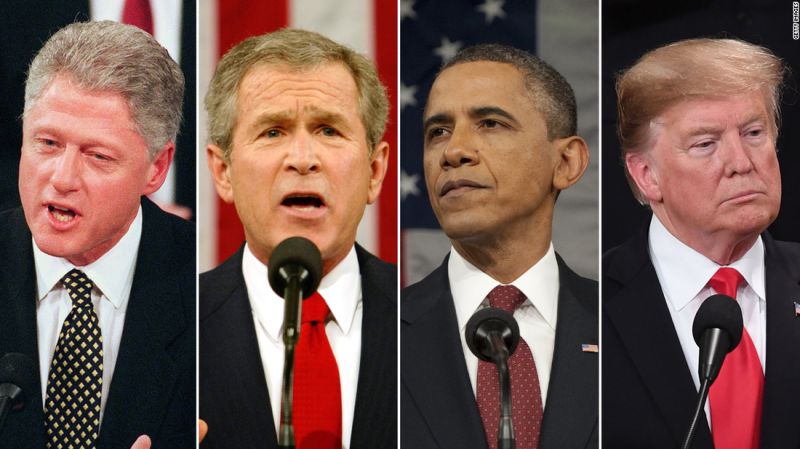When President Joe Biden delivers his State of the Union address Tuesday night, he will face a challenge that also confronted each of his four immediate predecessors: responding to an election that ended his party’s unified control of Congress.
Like Biden, Donald Trump, Barack Obama, George W. Bush and Bill Clinton all entered the White House with their party also controlling the House and Senate. That initially allowed all of them to drive an aggressive legislative agenda. But like Biden, each of them during their presidency saw voters send a signal of discontent by shifting control of one or both congressional chambers to the other party.
In their first State of the Union after that defeat, each president grappled directly with the new power alignment in Washington. But in their reaction to that uncomfortable reality, Biden’s predecessors offer contrasting models for how he may approach Tuesday’s speech.
Obama and Clinton, the two Democrats over that period, were the most conciliatory and even contrite, congratulating the new majority, pledging to work across party lines and signaling they would seek the political center. Trump, after the most cursory feints toward bipartisanship, was by far the most confrontational, reasserting his most polarizing campaign themes and warning the new Democratic House majority against investigating him. Bush fell in between: gracious and conciliatory both in tone and on his domestic agenda but unbending over his plans to escalate the Iraq War.
Many observers I spoke with expect Biden to offer a synthesis as well: much more conciliatory toward the new majority than Trump, but not nearly as deferential as Obama and Clinton.
Because it is so central to his political identity, Biden is likely to stress his commitment to cooperating across party lines and tout his success at completing multiple bipartisan bills over the past…
Read the full article here





